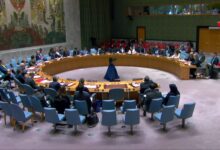Tehran’s empty houses doubled – Tejaratnews

According to Tejarat News, the field monitoring of Tehran’s housing market with the aim of “estimating the volume of empty houses” indicates a significant increase in these units between before and after the jump in property prices. The research report shows that in four categories of the capital’s regions, an average of 15% of residential units in the researched neighborhoods are kept empty (unused); So that the freezing rate is different in different categories. This research answers a misconception about the first zone and at the same time investigates two main causes by emphasizing the increase of these houses in the middle zones.
The new statistics on the condition of empty houses in the capital city show the increase and decrease in the number of these residential units in different neighborhoods. At the same time, the results of the field research of “World of Economics” show that the number of vacant units in Tehran has increased by 3.4 percentage points compared to the official statistics of 1995.
The result of observation of four groups of the region
The field research of “Economic World” regarding the quantity of the most recent situation of uninhabited houses in the city of Tehran in the studied neighborhoods, in four groups of regions of Tehran including region 1, regions 4 and 5, regions 8 to 10, 12 to 18 and region 22. It shows the fall and growth of empty houses in these neighborhoods and areas. In fact, the fall and growth of empty houses in these four groups of areas is clearly evident.
Surveys conducted on the selected neighborhoods of district one of Tehran city, which in previous years were introduced as the center of concentration of luxury units and empty houses, show a drop in the number of empty houses in this area. The results of recent monitoring show that the share of empty houses in this expensive area of Tehran (the most expensive area of the capital) has decreased from around 30% in the years before the jump to less than 20% now.
The cause of this issue can be attributed to the sharp growth in prices (price jump) and the sharp decrease in demand for housing in this area by investors, which has led to a noticeable decrease in the entry of empty houses to the market in this area as a result of capital purchases by large landlords. The results of the field research of the economic world as well as the narrative of the housing market activists in this region show that, following the sharp growth of prices in the housing market of this region, the demand for capital has decreased sharply. Even surveys show that it is extremely difficult to rent in this area, and due to the sharp jump in rent, the demand for housing has actually dropped.
In fact, not only has it become difficult to buy and sell luxury units, but this difficulty has also spread to the rental market under the influence of the jump in rent prices. Under the influence of this event, the prospect of favorable returns for investment in the housing market of this region has dropped sharply compared to previous years, and therefore the surveys indicate that, on average, in the investigated neighborhoods, the share of empty houses in Region 1 is close to 30 percent. In the years before the jump (such as 1995), it has now reached less than 20%.
The growth of “empty houses” in regions 4 and 5
While the surveys report a decrease in the share of empty houses in one area of Tehran, the number of empty houses in areas 4 and 5 of Tehran, which are high-demand and high-transaction areas, and at the same time the leading consumption areas in the northern half of Tehran in terms of housing transactions, is now It has increased significantly to the period before the recent surge.
A group of applicants for buying and renting in these areas have largely left these areas and moved to lower neighborhoods and areas due to weak purchasing power. Another reason is related to the shift of capital demand of a group of investors from district 1 of Tehran to districts 4 and 5. Following the decrease in the attractiveness of real estate investment in region one as mentioned above, some investors have migrated from region one to these two regions and changed their real estate investment destination for better and better liquidity as well as higher returns. . Naturally, with the increase in capital purchases by this group of real estate investors in these two areas, the number of empty houses has increased.
The third reason for the increase in the number of uninhabited houses is related to denying the possibility of replacement for a large group of builders in these two areas. In the normal years of the housing market, the builders sold or pre-sold newly built and semi-finished units as soon as they completed the construction of the units or in the middle stages of the work. But now the supply of buildable land and residential units in various areas of Tehran, especially in areas 4 and 5, is so limited that many builders are faced with the question of how to invest their capital in the real estate market in case of selling newly built units. And start construction!
In fact, these people do not have the necessary and sufficient access to suitable land for construction, and they prefer not to sell the units to the market in order to avoid losses and reduce the value of their capital, until the conditions improve and they find suitable land for construction. Keep it empty. Both this group of builders and that group of real estate investors who migrated from region 1 to regions 4 and 5 prefer to keep the units empty for two important reasons and refrain from offering them to the rental market. Investors prefer to keep the unit empty in order to be able to sell the unit as soon as they need and desire and to be able to obtain relatively quick liquidity, so that they can sell it at the first opportunity without any restrictions or obstacles. In addition, these people do not need to earn rent financially.
Growth and decline in the south
Field research on the condition of empty houses in southern areas of Tehran shows the rise and fall of these houses in the south of the capital.
The first reason is related to the shift of consumer demand from higher areas to these southern areas due to the more suitable apartment prices and rents compared to higher areas, which has caused many owners and capitalists to remove their units from empty state and to earn rental income. , to offer to tenants. In the situation that in previous years, low rents in these areas were not a good incentive for a group of real estate investors to rent and these units were mostly kept empty for the purpose of buying and selling in the short term, but now with the increase in the period of real estate investment in these areas to one year or more and Also, the noticeable increase in rent prices, some of the units that were previously uninhabited, are offered to the rental market.
The second reason is that the housing market of these areas is still the last bastion of consumer buyers, and is welcomed by applicants for a first home or conversion to a better home. Therefore, the number of empty houses in these areas is less than the consumption areas in the northern half of Tehran.
What about the city of empty towers?
Surveys also show a decrease in the share of empty houses in the city of empty towers, i.e. District 22 of Tehran, as the youngest district of the capital. In recent years, unofficial statistics reported that half of the residential units in District 22 of Tehran were empty. Last year, this amount was announced by the activists of this market to be about 30 to 40 percent of the units. But the recent surveys and field researches of the world of economics show that in this region, as in region 1, the share of empty houses in the total housing stock of this region has decreased.
Surveys show that the share of empty houses in this area has reached less than 20 percent. The reason for this is primarily due to the migration of consumer demand for buying and renting housing from nearby and non-adjacent areas, especially District 5 and District 4 of Tehran, to this area after the jump in prices and rents. Region 22, especially in the past year, was the migration destination of buyers and tenants who were no longer able to buy or rent housing in higher regions and migrated to this region.
Identification of three groups of empty houses
Another result of his monitoring of the latest situation of empty houses in Tehran is related to the identification of three groups of uninhabited apartments in the capital. A category of empty houses in Tehran is related to the units that are bought and kept empty by real estate investors for the purpose of long-term investment. The second category of newly built uninhabited houses belongs to the builders, who either have to keep the units empty due to the denial of the possibility of replacing the newly built units with buildable land, or they are forced to keep the units empty in order to sell them in the following months at a higher price and earn more profit. They keep it empty.
The third category of empty house owners are currently short-term investors or speculators who buy units and in some cases renovate them and after a few months, sell them on the market at a higher price. Most of these people, taking signals from the dollar market and planning that the effect of dollar fluctuations 1401 will eventually affect the price of housing 1402, buy housing and keep it empty so that they can sell these units at a higher price as soon as possible. to market
Sourcethe world of economy

